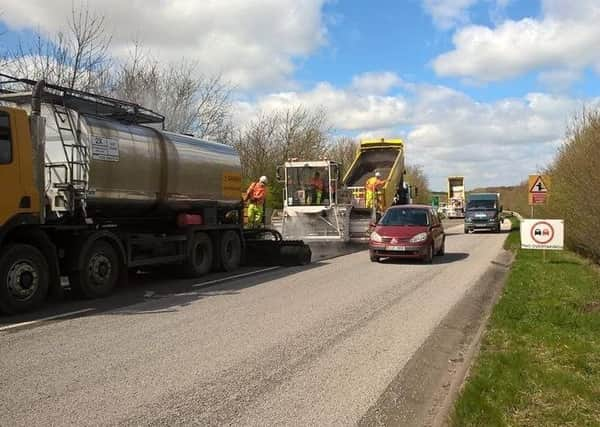Road surface dressing in the Horncastle area


Each location will take around one to two days to complete and the exact dates and timings for each location will depend upon weather conditions.
To ensure the safety of the workforce, appropriate forms of traffic management will need to be used at each site.
Advertisement
Hide AdAdvertisement
Hide AdThis means delays are likely and people are advised to use alternative routes where possible. We apologise for any inconvenience caused.
Following the works a 20mph speed limit will be in place for seven days.
The affected roads include:
• Edlington Road, Edlington
• Horncastle Road, Edlington (A158) programmed for tomorrow (Monday, August 6) - convoy working
• Mill Lane, Langton
• Lowmoor Road,Thornton
• Main Road, Roughton
• Spilsby Road, Horncastle
• Main Road, Dalderby (A153) programmed for Tuesday, August 7 - convoy working
• Moor Lane, Rougton
• Woodhall Road, Tattershall Thorpe
• Boston Road, Revesby
Advertisement
Hide AdAdvertisement
Hide Ad• Tumby Lane, Tumby Woodside (A155) programmed for Thursday, August 9 - convoy working
• Park Lane, Coningsby
• Old Boston Road, Coningsby
• Dogdyke Road, Hawthorn Hill
Surface dressing involves chippings being rolled into a layer of hot bitumen applied to the road.
Lincolnshire County Council do this because it:
• Improves skid resistance and makes the road safer
• Waterproofs and protects the road against winter damage that causes potholes
• Extends the life of the carriageway surface by up to 10 years
Advertisement
Hide AdAdvertisement
Hide Ad• Costs one fifth of the price of resurfacing, meaning we can treat more roads
• Prevents more expensive work being needed later on
• Wherever it has been carried out we introduce temporary speed limits to prevent damage to vehicles and to allow the surface to stabilise.